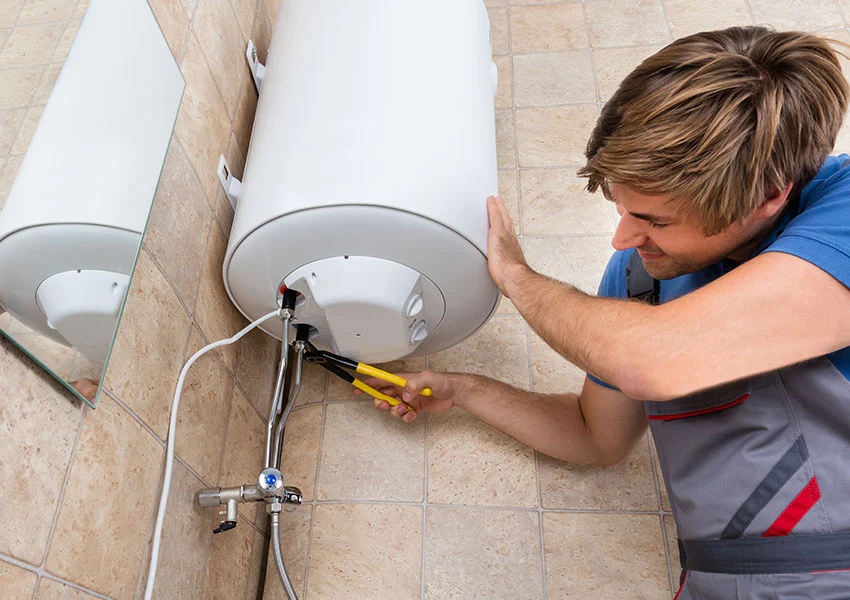How to Maintain Your Home's Hot Water System Properly
How to Maintain Your Home's Hot Water System Properly
Blog Article
Have you been looking for guidance on Tips on Maintaining a Water Heater?

Warm water is essential for day-to-day comfort, whether it's for a revitalizing shower or washing recipes. To ensure your warm water system runs efficiently and lasts much longer, regular upkeep is key. This post provides functional tips and understandings on how to preserve your home's warm water system to avoid disturbances and costly repair services.
Introduction
Preserving your home's warm water system might appear daunting, however with a couple of easy steps, you can guarantee it operates smoothly for several years to come. This overview covers every little thing from comprehending your warm water system to do it yourself maintenance ideas and recognizing when to hire specialist help.
Significance of Keeping Your Warm Water System
Regular maintenance not just extends the lifespan of your warm water system yet additionally guarantees it operates successfully. Disregarding upkeep can result in decreased efficiency, higher energy costs, and even early failing of the system.
Indications Your Warm Water System Requirements Maintenance
Knowing when your hot water system requires focus can prevent major problems. Watch out for indicators such as irregular water temperature, unusual noises from the heating unit, or rusty water.
Purging the Hot Water Heater
Purging your hot water heater removes sediment accumulation, enhancing effectiveness and lengthening its life.
Monitoring and Changing Anode Rods
Anode poles prevent corrosion inside the tank. Examining and replacing them when worn is critical.
Facility Concerns Requiring Professional Help
Examples include major leaks, electrical problems, or if your water heater is regularly underperforming.
Routine Professional Maintenance Advantages
Specialist upkeep can consist of detailed inspections, tune-ups, and ensuring conformity with safety and security criteria.
Evaluating and Readjusting Temperature Setups
Changing the temperature level setups makes certain optimum efficiency and safety.
DIY Tips for Maintenance
You can execute numerous upkeep jobs yourself to keep your hot water system in leading problem.
Looking for Leaks
Frequently examine pipes and links for leakages, as these can cause water damage and higher costs.
Recognizing Your Warm Water System
Prior to diving right into upkeep jobs, it's practical to comprehend the fundamental elements of your hot water system. Usually, this includes the water heater itself, pipes, anode rods, and temperature controls.
Regular Monthly Maintenance Tasks
Normal month-to-month checks can assist catch minor concerns prior to they intensify.
Testing Stress Relief Valves
Testing the stress relief valve ensures it operates properly and protects against too much pressure build-up.
Protecting Pipes
Shielding warm water pipes lowers warm loss and can conserve energy.
When to Call a Professional
While do it yourself maintenance is beneficial, some problems call for expert knowledge.
Verdict
Routine maintenance of your home's warm water system is important for performance, durability, and price savings. By following these ideas and knowing when to look for professional aid, you can guarantee a reliable supply of warm water without unexpected interruptions.
How to Maintain an Instant Hot Water Heater
Before tinkering with your hot water heater, make sure that it’s not powered on. You also have to turn off the main circuit breaker and shut off the main gas line to prevent accidents. Also turn off the water valves connected to your unit to prevent water from flowing into and out of the appliance. 2. When you’re done, you have to detach the purge valves’ caps. These look like the letter “T†and are situated on either side of the water valves. Doing so will release any pressure that has accumulated inside the valves while at the same time avoid hot water from shooting out and burning your skin. 3. When the purge valves’ caps are removed, you have to connect your hosing lines to the valves. Your unit should have come with three hoses but if it didn’t, you can purchase these things from any hardware or home repair shops. You can also get them from retail stores that sell water heating systems. Read the user’s manual and follow it to complete this task properly. When the hosing lines are connected, open the purge port’s valves. 4. You should never use harsh chemical cleaners or solutions when cleaning your unit. Make use of white vinegar instead. It should be undiluted and you’ll probably use about 2 gallons. 5. Now flush your water heater. This task should probably take about 40 minutes. We can’t give you specific directions for this because the procedure is carried out depending on the type, model and brand of your heater. With that being said, refer to the user’s manual. 6. When you’re done draining the unit, you have to turn off the purge port valves again. Remove the hosing lines that you earlier installed on each of the water valves. Put the valve caps (purge port) back in their respective places and be very careful so as not to damage the rubber discs that are found inside these caps. 7. Now that everything’s back in place, check your user’s manual again to find out how to reactivate your water heating system. 8. Once it is working, turn one of your hot water faucets on just to let air pass through the heater’s water supply pipes. Leave the tap on until water flows smoothly out of it. https://www.orrplumbing.com/blog/2014/september/how-to-maintain-an-instant-hot-water-heater/
:max_bytes(150000):strip_icc()/how-to-drain-a-water-heater-2719055-hero-35f0548b0f1f42f0b13ba96a33ab8da2.jpg)
Do you appreciate more info about How to Maintain Your Water Heater & Prolong its Life? Give feedback down below. We would be happy to listen to your reactions about this content. We hope that you visit us again soon. Sharing is caring. Helping others is fun. Thanks for taking the time to read it.
Book Your Installation Report this page